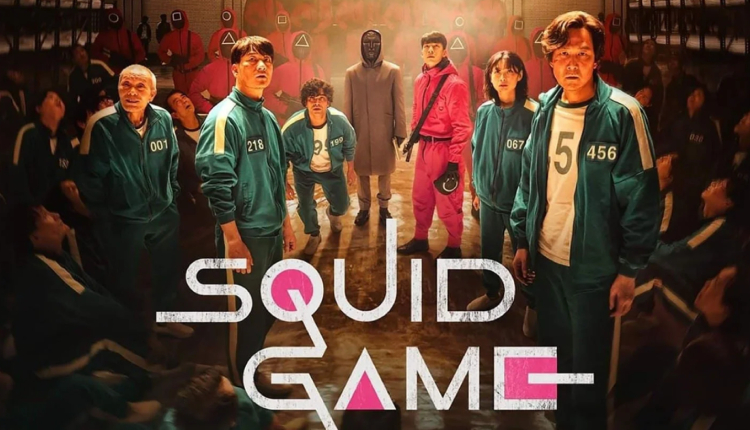We are too late to post an article about Squid Game but we find that it still holds a place in Netflix. Rather, it incorporates enormous life-lessons to audiences who watch. Grabbed the attention of the worldwide audience, Squid Game is a South Korean drama streaming on Netflix. Released on September 17, 2021, the first season of the series turn out to grab global attention. Although the title of the series resembles the Korean Children’s game, it was written by Hwang Dong-hyuk in 2009. However, he could not get any bankroll to take his idea to the next stage. But Netflix showed quite an interest in his idea. The series is designed based on the real-life struggles of the writer Hwang, himself who experienced economic struggles and was also a victim of class disparity. Coming to the first season of the series, all nine episodes were penned and directed by Hwang, himself. Not to mention, the survival drama television series is recently the most-watched Netflix series.
The Survival Series:
The drama centres around a contest including 456 players who are indebted and willing to play the game to pay them off as the prize amount is ₩45.6 billion. The main character or say, the protagonist of the series, Seong Gi-hun is an indebted chauffeur and divorced. He is seen obsessed with gambling wherein he wins and loses sometimes. He might be modelled upon the writer himself as Hwang met with economical struggles in his life. As the episodes go on, Gi-hun is invited to a playing Squid game which is based on a series of Children’s games that he played in his childhood days. If he wins, he wins a wholesome amount to pay off his debts. Along with him, the other important characters such as Kang Saebyeok, Ji-Yeong, Abdul Ali (one of the most-loved characters) and others accepted the invitation to play the game without the knowledge of the horrors associated with the game. Moreover, the most-loved character Ali is seen helping the main character of the series and he is a victim of racism in the series.
You may also like: Movies & TV Shows coming to Netflix, Hotstar & Others in March 2023
The Horrors & Six levels of The Squid Game:
The series is chiefly about the squid game which consists of six levels. All six levels put the players’ life or death situation which is exactly why the series is known as the ‘survival drama’. Here are the following levels of the game along with the associated horror elements.
• Red Light, Green Light:
It is the first level of the game in which, you might see a huge doll monitoring your moves. The players could move when the doll starts singing “red light, green light” and they should stop moving when the singing stops and turn around to monitor. If it finds someone shaking and moving, then the player would be shot dead. Isn’t this horrific? Well, this is the clipping that has gone viral throughout social media and it is used in reels and memes as well.
• Honeycomb or Dalgona Candy:
The second level of the game could be seen easily but it is not. The honeycomb candy where the players should choose a shape out of four given shapes such as a circle, a triangle, a star, or an umbrella. The player would be provided with a honeycomb that is imprinted with the shape which he or she has chosen. The allotted time for the game is 10 minutes and they should extract the given shape without collapsing it. When failed, they meet their end. Sounds interesting yet difficult, doesn’t it? Well, the umbrella is the most challenging shape of all and you could have seen our main character completing the game by extracting the umbrella shape from the tin. Sometimes, the sweetest things are dangerous.
• Tug of War:

The third game is a tug of war which is well-known to many. The two teams with 10 members each should compete in this game. The game is to pull the opponent team across the common line drawn between the two teams with the help of the rope. The failing team would fall through the gap and they would perish. That’s how terrific the game would be!
• Marble:
Like a tug of war, the Marble game is one of the games you would have played as a child. But it is not the same when it comes to Squid games especially when you are at the edge of life. In this marble game, there are no rules given but it is in the hands of the players to set their rules. The players are allowed to choose the partner for the game using 20 marbles and in the end, the winner should have all the marbles. While at the beginning of the game, the players are joyfully picking their partner, they are not aware of the point that they would be competing with their partner itself. And you know how dreadfully it ends! Well, the favourite character, Ali, dies in this game as he actually wins but his partner manipulates and betrays him.
• Glass Bridge:

Being the most horrific level or game of the series, the Glass Bridge is known to be a game of chance. The glass bridge is set almost about hundreds of feet above the ground. With a total of 16 minutes, the player should cross the bridge wherein one is tempered glass that could hold up to the weight of two people. However, it would crack if the weight of the player is beyond it and make him or her fall for death. The scariest part of the game is that the glasses would break if the time is up and all the players would die.
•The Squid Game:
Finally, the Squid Game which has its introduction at the beginning of the series, is played on a sand surface. This is the last level of the game wherein the players are divided into attackers and defenders of the rival teams. Besides being a popular Korean children’s game in the 1970s and 1980s, the game is now a game of life or death. The attackers’ target is to walk towards the middle of the pitch on one-foot post-reaching the “home” square that is marked on the other side of the field. While this is the attackers’ part, the defenders should block them. When the attacker goes through the squid’s waist without succumbing to the defence group, then they could use both feet or ‘inspector royale’. The winner should pronounce ‘victory’ at the end of the game as it is the last one with only one winner.
5 Lessons to learn from The Squid Game Series:
Although the series revolves around the horrendous game, there are enough elements to learn from it. So, here are the top 5 lessons to learn from the series that gained global attention within a short period. Read on. . .

1. Spend Your Money Wisely:
The protagonist is known to be an obsessed gambler who wins and loses sometimes. He puts most of his money into gambling and loses most of it. Gi-hun is the perfect example of how not to waste your money instead to use it wisely in life.
2. Gambling could finish You:
As you could see, the main character is an obsessed gambler through which he could earn more money. However, it would only destroy him and turn him into an indebted person. So, gambling would never help you in any situation.
3. Money is not everything:
There is an old player in the game who partnered with the protagonist in the Marble game. The old man has our heart as he is defeated by Gi-hun. But he hugs him before his life is taken. The Marble game depicts the love and affection of the truthful partners that surpass the game or money.
4. Never Trust Blindly:
Again, the Marble game portrays why you should never trust someone blindly through the series’ favourite character, Ali. He trusts his partner in the fourth game but the partner is not worthy of his trust since he manipulates and betrays Ali thereby leaving him to die.
5. Teamwork makes you win:
When it comes to tug of war, it teaches you the real power of teamwork as the two teams win the game due to their members’ cooperation with each other.
We will be delighted to have your thoughts and feedback. Please write to us at [email protected]
Follow Life and Trendz on Instagram: https://instagram.com/lifeandtrendz?igshid=Yzg5MTU1MDY=
Facebook: https://www.facebook.com/lifeandtrendz
Twitter: https://twitter.com/LifeandTrendz


Comments are closed.